Verona in the Veneto is a great base for your exploration of Northern Italy.
The city is very pretty and offers a long list of things to do, see and experience. Plus, it is compact, so you can do it all on foot.
However, when you have ticked off all the Romeo and Juliet, ancient Roman and medieval sights you wanted to see there though, consider taking at least one day trip from Verona.
It doesn’t matter if you are an art aficionado, a self-confessed foodie or a hiking fiend. It’s not a problem if you love small off-the-beaten-track places or adore the hustle and bustle of large cities. There are many options for exciting day trips to take within a short distance of Verona to satisfy the needs and wants of even the most capricious traveller.
Each of these day trips from Verona has been personally tried and tested by me. For ease of use I have organised them in alphabetical order. I have also included lots of interesting information, travel times and photos bellow to give you an idea what to expect and to whet your appetite. The maximum travel time is 2 hours one way, as no-one wants to spend a large chunk of the day just getting there, when there is so much to see and do within a very close proximity to Verona.
Italy is an exciting country with a rich heritage. The more you see the more you want to see and to experience it all. So, take your pick according to your interests – art, nature, architecture, history, even spa and wellness!
With a few exceptions, all day trips from Verona given here are by train. Train travel in Italy is well organised and it doesn’t cost the earth, so there is nothing to stop you from exploring. Plus, at the end of the article I have provided lots of tips to help you navigate the Italian train system like a local.
Let’s start!
16 of the Best Day Trips from Verona
1. Ala
A visit to Ala in the Northern Italian autonomous province of Trentino is a very easy and incredibly pleasant day trip from Verona. Not many people have heard of Ala, which makes the town beautifully free of large crowds of tourists and very authentic in its look and feel. Between the 17th and the 18th centuries the town was an important centre of silk production. The silk velvet made in Ala was highly valued all over Europe. Don’t miss the following sights and events:
- Ala’s Baroque palaces – built with the income from the sale of the silk velvet, the palaces are beautiful. Visiting them one by one is an enjoyable way to spend a leisurely day;
- At Christmas each year a large Christmas market is staged all through Ala and its Baroque palaces. Only local artisans exhibit so you can buy unique handicrafts and locally produced honey, oils and other products;
- Historic centre – one of Trentino’s best preserved historic centres with cobbled streets and authentic atmosphere;
- Museo del Pianoforte Antico (Antique Piano Museum) in Palazzi de’ Pizzini – the palace has played host to such illustrious personages as Bonaparte and Mozart. The museum holds the pianos of Mozart, Beethoven, Chopin and Schubert;
- Citta di Velluto – City of Velvet is a yearly event held in July when Ala returns to the 17th century with a splendid town-wide reenactment;
- Local churches and San Valentino Sanctuary – for a taste of local life and religious observance.
Ala is a little Baroque jewel in the crown of day trips from Verona. Off-the-beaten path, it will give you a chance to explore Italy from a new point of view and learn about its artisan history.
Travel times: From 35 mins (Regionale Veloce) and from 45 mins (Regionale)
Tips: You can combine a quick visit to Ala with a longer visit to Rovereto (see point 12 below) for a day trip from Verona to remember.
2. Bologna
Bologna is the capital of the Italian region of Emilia-Romagna and the seventh most populous city in Italy. Bologna is famous the world over for its food traditions. Millions of people flock to the city each year to experience its fabulous fresh pasta, more-ish mortadella, genuine gelato in dozens of flavours and universally famous meat sauce locally which Italians call ragu (and everybody else calls bolognese). Apart from eating lots of great food, in a fast-paced day, you can see several of Bologna’s main sights. Here are the most spectacular ones:
- Archiginnasio – the first permanent seat of the University of Bologna which is the oldest University in the world still in continuous operation today;
- Asinelli and Garisenda towers – witnesses of Bologna medieval past when close to 200 towers graced the city’s skyline;
- Basilica of Santo Stefano (also known as Sette Chiese) – built over what was originally a temple of the goddess Isis and then grew into a complex of seven interconnected chapels and churches;
- Neptune’s Fountain;
- Quadrilatero – the city’s medieval market which is still going strong;
- Basilica di San Petronio – Bologna’s main church;
- Piazza Maggiore – lined up by splendid palaces like Palazzo d’Accursio and the largest brick cathedral in the world – the Cathedral of St. Petronius;
- Endless porticoes keeping you from rain and shine alike;
- FICO Eataly World – the largest agri-food park in the world.
Very different to Verona, Bologna will give you a chance to delve deeper into Italy’s history and art. Plus, there is simply no chance to have bad food in the city which is known as La Gorda (the Fat One) Italy-wide.
Travel Times: From 50 mins (Frecciargento) and from 1 h 24 mins (Regionale Veloce).
Tips: Click here for more information about what to do and see in Bologna. Click here for more details about Bologna University and its historical seat – the Archiginnasio.
3. Bolzano
Bolzano is an Alpine town and the capital of the Italian autonomous province of Alto Adige (in English, South Tyrol). Visiting it is a chance to experience the beauty of the Northern Italian mountains. Every year the city hosts a large Christmas market which attracts people from all over Europe and beyond. Due to the history of the province, German is widely spoken there and the whole area has a pronounced German/Austrian feel to it. It is a very different Italy to the popular cliches applied to the country. When in Bolzano don’t miss these wonderful sights:
- South Tyrol Museum of Archaeology with its exposition dedicated to Ötzi the Iceman;
- Assumption of Our Lady Cathedral with its beautiful colourful roof and Romanesque/Gothic architecture plus the adjacent Cathedral Treasury museum;
- Dominican Church with its 14th century frescoes, as well as several other centuries-old churches large and small;
- Walther Square which is surrounded by colourful buildings and serves as the stage of the annual Christmas market and Flower market;
- at least one of the four splendid castles within easy reach from Bolzano: Runkelstein Castle, Mareccio Castle, Sigmundskron Castle and Flavon Castle Haselburg;
- Laubengasse or Via dei Portici – a long street with medieval arcades;
- Museion – Bolzano’s Museum of Modern and Contemporary Art which holds over 4500 works of art.
Bolzano, huddled in a valley surrounded by lush vineyards, is a very picturesque place. Put it on top of your wish list with day trips to take from Verona if you want to experience a completely different side of Italy.
Travel Times: From 1 h 27 mins (Eurocity and Frecciargento) and from 1 h 40 mins (Regionale Veloce).
Tips: Click here to learn more about Runkelstein Castle.
4. Borghetto, Valeggio sul Mincio and Garden Park Sigurta
This is a great day out from Verona with the potential to delight garden enthusiasts, dedicated foodies and history buffs alike. Valeggio – a pretty town on the shores of the river Mincio – is only about 30 km away from Verona. When you visit it, don’t miss the following sights:
- Garden Park Sigurta – one of the most beautiful gardens in Italy and Europe, famous for its huge tulip displays. Read more about it here;
- Scaliger Castle – the proud ruins of this medieval castle stand on top of a hill offering a stunning view over the valley of the river Mincio on one side and the town of Valeggio sul Mincio on the other;
- Visconti Bridge – built in 1393 this defensive bridge with still surviving fortified towers needs to be seen to be believed. 650 m long and 25 m wide, it straddles the river Mincio and looks over the picturesque Borghetto sul Mincio;
- Borghetto sul Mincio – a small hamlet with old watermills of Valeggio sul Mincio. Borghetto is officially renowned as one of Italy’s most beautiful villages. People have been living there since ancient times and in more recent history Borghetto was the scene of a battle between Napoleon and the Austrian army.
When in Borghetto and Valeggio sul Mincio don’t miss the local delicacy – tortellini (also known as tortelli). These are little pasta wraps stuffed with morsels of tasty fillings. A local legend calls them ‘loveknots’ and tells the story of a river nymph who fell in love with a mortal man (read all about it here). Enjoy a portion of handmade tortellini in one of the restaurants housed in Borghetto’s old watermills on the river Mincio.
Travel Times: From 1 h 2 mins by bus. From 47 mins if you take the train to Peschiera del Garda and then the bus to Valeggio sul Mincio.
Tips: You can read more about Borghetto sul Mincio here and here. Work out a generous portion of tortellini by going on a little hike from Borghetto to the Scaliger Castle. Read entry 2 in this list for details how to do it.
5. Brescia
Brescia is a hidden gem in the Italian province of Lombardy. While most tourists head over to the Lombardian capital Milan, make sure that you get off the train at Brescia to experience its unexpected beauty. The city’s history spans 3200 years and offers a rich tapestry of sights and museums for you to explore. Among these are:
- Monumental area of the Roman Forum – which contains the best preserved Roman public buildings in Northern Italy;
- Huge medieval castle with battlements, a tower, drawbridge, rampart and an Arms Museum in the keep. Its position on the steep Cidneo hill also offers unparalleled views over Brescia;
- Many spacious squares lined up by stunning buildings. Don’t miss the Art Deco Piazza della Vittoria (with its Torrione – the first skyscraper built in Italy) and the Renaissance Piazza della Loggia (with the inspiring Palazzo della Loggia and the beautiful astronomical clock).
- Duomo Vecchio and Duomo Nuovo (The Old and the New Cathedrals);
- Monastic Complex of San Salvatore/Santa Giulia (Santa Giulia City Museum) – with 11 000 works of art and archaeological finds;
- Teatro Grande – a lavish opera house.
There are so many things to see and experience in Brescia, you can have a very full and exciting day there. Make sure that you plan well so as to cover as much ground as you can.
Travel Times: From 35 mins (Frecciarossa) and from 41 mins (Regionale).
Tips: Try the local cheese Bagoss. It is produced in small quantities in the nearby village of Bagolino and it has a lovely dense and salty flavour with hints of walnuts and chestnuts. Click here for more details about Brescia’s stunning Palazzo della Loggia.
6. Ferrara
Ferrara is beautiful and has so much to offer to the discerning traveller eager to learn more about Italy’s medieval history and art. Ruled by the House of Este in the 14th and 15th centuries, the city boasts several splendid palaces, a Romanesque cathedral with a fabulous facade, and 9 km of ancient defensive walls which are (alongside those of Lucca in Tuscany) the best preserved Renaissance walls in Italy. Ferrara’s historical centre is a UNESCO World Heritage site. Some of the main sights here are:
- Castello Estense – an iconic medieval brick building surrounded by a moat in Ferrara’s heart;
- Cathedral of San Giorgio with its lace-like facade, the construction of which started at the beginning of the 12th century;
- Palazzo dei Diamanti – the seat of the National Gallery;
- University of Ferrara with its Botanical Garden – Copernicus being one of its most notable students;
- Natural History Museum with a dreamy building;
- Teatro Comunale – its internal courtyard (called Rotonda Foschini in honour of the engineer Antonio Foschini) will make you marvel at its perfectly elliptical shape.
Ferrara is also an incredibly easy city to explore with children in tow. Head over there to give your little ones a chance to run and have fun in the many playgrounds installed all over town.
Travel Times: From 1 h 23 mins (Frecciarossa and Frecciargento).
Tips: Come to Ferrara in September when Italy’s most important ballooning event takes place. Over nine days colourful baloons fly over the historical centre of Ferrara twice a day. The Ferrara Balloons Festival is held in the Bassani Urban Park just outside of the city’s Renaissance defensive walls. It is a big event with thousands of people flocking to see it, with pop-up restaurants and lots of entertainment options for little ones and grown-ups. Click here to find out more.
7. Lake Garda with Gorgeous Lakeside Towns and World-Class Amusement Parks
Lago di Garda is Italy’s biggest lake. Its shores are dotted with picturesque towns and villages and its landscapes leave you breathless. You can get there very swiftly from Verona to experience la dolce vita in its true sense. Medieval castles, Roman ruins, frescoed houses, lake views, nature hikes, spa procedures, boat trips, sublime gelato. You can savour it all in one perfect day. Peschiera del Garda, Desenzano del Garda, Sirmione, Lazise, Bardolino, Garda, Torri del Benaco; Monselice, Torbole and Riva del Garda are some of the towns on Lake Garda which you can reach with ease for a fantastic day trip from Verona. You can spend a lazy day in just one town or, even better, zip between several of them from dawn til dusk. Don’t miss:
- Fortress and external fortifications in Peschiera del Garda – part of UNESCO’s World Heritage Site list;
- Archaeological Museum, castle, old villas and Tower of St. Martin in Desenzano del Garda;
- Scaliger Castle, Grottoes of Catullus (the ruins of a huge Roman villa), spa treatments, beaches and boat trips around the promontory in Sirmione;
- Defensive wall, Scaliger Castle (not open for visits), lakefront promenade, Church of San Nicolo in Lazise;
- Church of San Nicolo, lakefront promenade and marina in Bardolino plus the Olive Oil Museum in nearby Cisano;
- Palazzo dei Capitani, Villa degli Albertini (not open for visits), lakefront promenade and marina in Garda;
- Punta di San Vigilio near Garda;
- Scaliger Castle and ferry across the lake to Maderno in Torri del Benaco;
- Scaliger Castle and funicular to the top of Mount Baldo (called ‘The Garden of Europe’) in Monselice;
- Several large amusement parks and aquaparks. Check Gardaland, Caneva The Aquapark and CanevaWorld Movieland among others.
Lake Garda and the towns on its shores offer so many options and so much beauty to experience in a day that even the traveller who really knows their mind will find it difficult to choose. As such, make a plan before you go so that you can see as much as possible and yet feel refreshed and full of happy memories at the end of your day trip from Verona.
Travel Times: From 14 mins (Frecciarossa) and 13 mins (Regionale) to Peschiera del Garda. From 19 mins (Frecciarossa) and 23 mins (Regionale) to Desenzano del Garda/Sirmione. From 1 h 29 mins (Frecciarossa and Regionale Veloce) and 1 h 48 mins (Regionale) to Monselice. To reach Lazise, Garda and Torri del Benaco from Verona you can get a coach from Verona Porta Nuova train station. Travelling times vary depending on the destination, but are less than 2 hours one way. You can also easily walk from some of the lakefront towns to the next. For example, from Lazise to Bardolino. Shuttle buses are available at Peschiera del Garda train station to ferry you to the amusement parks.
Tips: Lake Garda is gorgeous to visit any time of the year. July and August tend to be crowded, but any other month (including the Christmas period) the place is gorgeous. Beware that most historical sights may be closed on Mondays. Look into visiting Torbole, Riva del Garda, Limone sul Garda, and Maderno, if you are looking for more ideas as to cute little towns to see on the shores of the lake. For more tips and information about Lake Garda, have a look at my articles here, here, here, here and here. For more information as to what to see and do in Sirmione see point 16 here.
8. Mantua (Mantova)
Mantua or Mantova (as they call it in Italian) is a dreamy city where exquisite palaces with fully frescoed rooms will compete with the delicious local cuisine for your attention and love. The city’s historical centre is a UNESCO World Heritage Site. Three artificial lakes (created in the 12th century) surround Mantua on three sides thus ensuring its defense in medieval times. Here are some of the main sights:
- Ducal Palace – the abode of Mantua’s once ruling family the Gonzagas. Seeing all of its splendid rooms will take a significant chunk of your time, so plan accordingly. Particular attention deserves the Camera degli Sposi (Bridal Chamber) frescoed by one of my favourite painters Andrea Mantegna. Look up to see the charming cherubs peeking into the room;
- Palazzo Te – a 16th century Renaissance palace of leisure;
- Rotonda of San Lorenzo – the most ancient church in the city built on the spot once occupied by a Roman temple dedicated to Venus;
- Basilica of Sant’Andrea – a 15th century Renaissance work of architecture;
- Bibiena Theatre – a beautiful 18th century building where Mozart played at 13 years of age.
In terms of food, make sure that you spend some time indulging in such local delicacies as: pumpkin tortelli, cotechino sausage and Sbrisolona cake. The latter is sold in shops all over the city and makes for a wonderful present.
Travel Times: From 46 mins (Regionale)
Tips: If you can extend your day trip from Verona to two days, consider visiting nearby Sabbioneta built to be the Ideal Renaissance City.
9. Medieval Walled Towns
Within very easy reach of Verona, you will find a gorgeous bunch of medieval walled towns. With their mighty defensive walls and picturesque sights they are able to make the heart of a history and art buff sing with happiness and appreciation. Here are four for your consideration:
- Soave – an elegant medieval walled town famous for its white wine. Walk its cobbled streets lined by colourful houses and take a hike to the top of Mount Tenda where you can visit Soave’s medieval castle and then walk through olive groves and lush vineyards. Have a look at entry 17 in this list for details about this light and very pleasant hike. Have a look at this article for more photos and information about visiting Soave.
- Castelfranco Veneto – the cutest of the pack. An almost intact defensive wall circumnavigates the town’s historical centre. Don’t miss Giorgione’s House, then visit the adjacent 18th century cathedral where you can admire the artist’s breathtaking Castelfranco Madonna. The views from the Torre Civica are worth the steep steps to reach the tower’s top. If you can, come in September, when the town holds a Medieval Fair.
- Cittadella – one of my most favourite small towns in Northern Italy. Here you will find ‘Europe’s best medieval parapet walkway’. In simple English this means that you can circumnavigate the whole town by walking on its medieval defensive wall. For this you need to climb 14 meters up the wall via narrow passages and steep steps and then follow a path by the battlements. At certain points you will need to go even higher – up to 30 meters in fact. All this exercise will offer you an unparalleled view of the old town encircled by the wall and, beyond it, the Pre-Alps on the horizon.
- Monselice – a gorgeous medieval town where the Venetian noblemen used to holiday every summer. It has a stunning castle which can be visited as part of a guided visit. Not to be missed. Then you can go for a walk to the Sanctuary of the Seven Churches. Visiting them grants you the same papal indulgences as those granted to the pilgrims who have visited the seven Holy Year churches in Rome. Have a look at entry 11 in this list for more details how to do it.
There are many medieval walled towns in the Veneto. The four I have suggested above are some of the most splendid and easiest to reach from Verona. If you want more suggestions, check out: Asolo, Marostica and Noale.
Travel Times: From 44 mins (by bus from Verona Stradone Scipione Maffei) to Soave. From 1 h 20 mins (Frecciarossa and Regionale) and from 1 h 29 mins (Regionale Veloce and Regionale) to Castelfranco Veneto. From 1 h 8 mins (Frecciarossa and Regionale) and from 1 h 17 mins (Regionale Veloce and Regionale) to Cittadella. From 1 h 29 mins (Frecciarossa and Regionale Veloce).
Tips: You can explore Castelfranco Veneto and Cittadella in one day. There is a direct train line connecting these two medieval walled towns, so that you can spend the morning in one and the afternoon in the other. This particular train line starts in Vicenza (see point 16 below) and finishes in Treviso (see point 14 below), so you can also combine a visit to either Castelfranco Veneto or Cittadella with a visit to either Vicenza or Treviso and make it a mega day trip from Verona to remember.
10. Milan (Milano)
Second in Italy in terms of its population, the city of Milan is a hustling and bustling metropolis where you can certainly feel the modern heart of the country beating a frenetic drum. In comparison with other smaller Italian cities and towns, Milan may look a bit grey, rough around the edges and uninspiring at a first glance. You just need to look deeper beneath the surface to easily discover impressive sights. Some of these are:
- Milan Cathedral (Duomo) – the largest Gothic cathedral in the world. With its lacy facade it is a sight to behold;
- Sforza Castle – a medieval fortress which in the 15th century was enlarged by the ruling Sforza family;
- Leonardo da Vinci’s Last Supper – it is advisable to book your ticket in advance;
- La Scalla Theatre – if you can’t catch a performance, make sure that you visit the theatre’s museum telling the story of this historical institution;
- Galleria Vittorio Emanuele II – the world’s oldest still active shopping mall;
- A skyscraper-dotted skyline.
A day is hardly enough to see all that Milan has to offer. Yet, provided you plan well and are clear as to which sights you want to squeeze in your available time, you will be able to gain a good idea of the character of this dynamic albeit a bit dusty Italian city.
Travel Times: From 1 h 4 mins (Frecciarossa) and from 1 h 50 mins (Regionale)
Tips: If you want to see Milan from above, have a look at point 2 in this list for the best bird’s-eye viewpoints.
11. Padua (Padova)
Tucked between Venice and Verona, Padua is often overlooked for one of these two much more famous cities. Still, if you look into it, you will soon discover that the art, the museums, the history and the shopping make Padua a real gem to have in your travel schedule. The city is mainly known as the setting of Shakespeare’s ‘The Taming of the Shrew’, however there is much more to Padua than this. When you are there, don’t miss the following sights:
- Scrovegni Chapel with its stunning frescoes by Giotto. Tickets are in demand and tied to a time slot, so head there as soon as you arrive or book in advance;
- Palazzo della Ragione – read more about it here;
- Padua’s 800 years old daily market (Sundays excluded) which is still going strong – read more about it here;
- Palazzo del Bo – the seat of Padua’s University. Founded in 1222, it is one of the oldest Universities in Europe and the second oldest University in Italy. This is where Galileo Galilei used to teach. You can visit the historical part of the University as part of a guided tour taking place several times a day. Read more about it here;
- Prato della Valle – a huge elliptical square with a surface of 90 000 sq m which is the biggest in Italy and one of the biggest in Europe;
- Orto Botanico – the oldest botanical garden in the world. Read more about it here;
- Basilica of St Anthony of Padua – where the body and the relics of the saint are venerated;
- Caffe Pedrocchi – two hundred years old and one of Italy’s historical coffee houses. It used to be open 24/7. You will find its beautiful building just opposite Palazzo del Bo.
There are so many unique and wonderful things to be seen and experienced in Padua, it is impossible to mention them all here. The train journey from Verona takes just over 40 mins, so it makes for a wonderful day trip.
Travel Times: From 42 mins (Frecciarossa) and from 58 mins (Regionale Veloce).
Tips: Set some time aside to explore Padua’s hidden gems. Visit the Church of the Eremitani to see the Mantegna frescoes. Read here the amazing story of how they were destroyed during the bombings of the Second World War and then decades later restored using advanced mathematical calculations. Don’t miss the Baptistery right next to Padua’s Duomo. It is covered in splendid frescoes and photos there are not allowed, so you can immerse yourself in a beautiful moment of art appreciation. Another little gem is St. Anthony’s School (just off the Basilica of St. Anthony) which is covered in frescoes (mainly) by Titian. Finally, when in Padua, don’t miss the fabulous cakes and sweets typical for this beautiful Italian city. Click here to find out more about them.
12. Rovereto
Are you looking for that undiscovered Italian gem? Go to Rovereto! Huddled on the edge of the Italian Alps, the cit is a paradise for hikers, history buffs and lovers of modern art. Here are some of the main sights:
- Italian War History Museum – housed in Rovereto castle, the museum keeps the memory of the Great War and modern conflicts;
- Depero’s House of Futurist Art – founded in 1919 by the Italian futurist painter, writer, sculptor and graphic designer Fortunato Depero;
- MART – one of Europe’s most important museums of contemporary and modern art;
- St. Marks’ Church – where Mozart held his first concert in Italy on 26th December 1769;
- Bontadi – a historic cafe with an adjacent museum dedicated to the history of coffee;
- Annual Mozart Festival;
- Stunning frescoed buildings and picturesque squares.
Rovereto offers so much more. You can spend a whole day there and never be bored. Or you can combine a visit to Rovereto with a stopover at nearby Ala to see its Baroque palaces (see point 1 in this list with day trips from Verona).
Travel Times: From 37 mins (Eurocity or Frecciargento) and from 46 mins (Regionale).
Tips: Click here for 20 photos to make you fall in love with Rovereto in the Italian Alps. Click here for my travel video ‘Rovereto – Live Your Italian Dream’.
13. Trento
Trento is the capital of the Northern Italian autonomous province of Trentino and also the place where the Council of Trent took place in the 16th century. The historical centre of the city is very beautiful while a modern Science Museum is a magnet for kids and adults alike. Here are some of the things you can enjoy seeing in Trento on a day trip from Verona:
- Cathedral of Saint Vigilius (Duomo);
- Piazza Duomo – a breathtaking square lined up with frescoed buildings. Here you can also see the majestic Neptune’s fountain;
- Buonconsiglio Castle – dating back to the 13th century;
- Many churches and palaces telling the story of Trento;
- MUSE Science Museum of Trento – you can easily spend a whole day here. We particularly loved the glacier exhibit with a real-life model of a glacier.
A visit to this lovely city is enriching on so many different levels. Put it high on your wish list if you love history, science or if your soul sings at the sight of frescoed buildings.
Travel Times: From 51 mins (Frecciargento) and from 1 h (Regionale)
Tips: If by any chance you have a car at your disposal and are looking for a one-of-kind experience, consider driving from Trento to a nearby farm. Called Maso Eden, it specialises in lama- and alpaca-rearing. It also organises forest hikes in the gentle company of lamas and alpacas. Click here for more details.
14. Treviso
People usually fly into Treviso and then head straight to either Venice or Verona, completely bypassing this rather very pretty Northern Italian city. Don’t make the same mistake. Treviso with its breathtaking frescoed and decorated buildings and narrow curving streets guarantees a day of exciting exploration. Some of the main sights here are:
- Piazza dei Signori – the main square where you can admire the imposing Palazzo dei Trecento – built in the 13th and the 14th centuries, it was the seat of Treviso’s Highest Council (the main administrative body of the city) and nowadays it houses the municipal council.
- Loggia dei Cavalieri – an elegant structure with faded frescoes in the heart of the old town. It was built in the 13th century to serve the local nobility as a place for meetings, conversations, and games.
- La Pescheria – a small river island in the historic centre of the city where the fish market is held.
- San Francesco Church – a prime example of the late Romanesque/early Gothic style, this church was used as a stable by Napoleon’s troops. Here are the tombs of Petrarch’s daughter Francesca and Dante’s son Pietro.
- Church of San Nicolo’ – for its many frescoes and also the earliest depiction of spectacles (eyeglasses) in Europe.
- The seven-domed cathedral where you can admire a Titian and a very atmospheric crypt among other things.
Follow Treviso’s cobbled streets to the Museum of Santa Caterina for its outstanding collection of paintings, frescoes by Tomaso di Modena and rich archaeological section. This is also where some of the best art exhibitions in the Veneto are held. Then head to the Luigi Bailo Museum in town for a lovely portion of art by local artists from the 19th and 20th centuries.
Travel Times: From 1 h 34 mins (Frecciarossa and Regionale Veloce).
Tips: Treviso is the birthplace of a dessert, a vegetable and a drink which make our lives so much better. The first one is tiramisu – that glorious dessert made with coffee- and marsala-dipped ladyfingers which are then layered with mascarpone beaten with raw eggs. The second one is the radicchio rosso – also called Italian chicory in English. Its bitter taste is a great complement to any fresh salad, plus it is very tasty grilled and added to pasta dishes, too. The third one is prosecco which nowadays is incredibly popular in the UK. You can combine half a day in Treviso with a visit to a nearby medieval walled town. Castelfranco Veneto and Cittadella are both very easy to reach from Treviso’s train station.
15. Venice
It would be a shame to spend just a day in Venice, but when the time is tight, don’t hesitate to dedicate a day to this beautiful unique city where there is so much to see and do. Venice is a very popular destination and for the most of the year it is rather overcrowded with eager tourists. Make sure that you have a good idea as to what you want to see and consider that you will spend the whole day mainly walking, so wear your most comfortable shoes. Here are some suggestions for places to explore and things to do for a pleasant day in Venice avoiding the crowds as much as possible.
- Take the vaporetto line 1 down the Grand Canal all the way to St. Mark’s Square. Yes, it is pricey, but it is a fabulous introduction to the beauty of Venice. Along the way you will see such stunning buildings and structures as Ca Pesaro, Ca d’Oro, Rialto Bridge, Ca Rezzonico, Accademia Bridge, Gallerie dell’Accademia, the church Santa Maria della Salute and the St. Mark’s Basin with St. Mark’s Square and the Doge’s Palace on one side and the islet of San Giorgio Maggiore on the other;
- Visit the Doge’s Palace – it will give you a really good idea of Venice as a political and commercial titan during its heyday. You will also gain an understanding of the Republic of Venice unique governmental structure and will see some stunning art;
- If you can (queues allowing) visit St. Mark’s Basilica and go up its adjacent bell tower;
- Tuck into a generous selection of cicchetti – Venice’s own traditional snacks washed down with a glass of wine;
- Explore Rialto fruit and veg market and Rialto fish market. Learn more about the latter here;
- Take a traghetto across the Grand Canal. Click here to learn more about Venetian traghetti;
- Explore a less crowded museum or sight like Fondazione Querini Stampalia, the Ships Pavillion, La Fenice Opera Theatre or Ca Pesaro;
- Book a private tour of Venice tailor-made to your exact specifications and expectations. I recommend Luisella Romeo from See Venice and Erika Cornali from When in Venice;
- If you are lucky to be there at the right time, enjoy a historical event, like Carnevale, Venice Historical Regatta, Regatta of the Ancient Maritime Republics or even the annual Befana race;
- Walk everywhere and visit every church you will come across.
Venice is such a delight. Approached with a little bit of planning, a day trip to the city on water can be a travel highlight to remember and cherish for years to come.
Travel Times: From 1 h 10 mins (Frecciarossa) and from 1 h 27 mins (Regionale Veloce).
Tips: The train station you need to get off at is Venezia Santa Lucia. It is the last stop on the train track. Don’t get off at Venezia Mestre as this is the train station of mainland Venice.
16. Vicenza
Known as the Pearl of Renaissance, the Heart of Veneto, the City of Palladio and the Gold Town, Vicenza lies half-way between Venice and Verona in the Northern Italian region of the Veneto. The city is a creative hub of art, jewellery traditions and one-of-a-kind events. Plus it is a veritable open-air museum of architecture. Its streets are lined with sumptuous palaces and buildings which have inspired architectural cannons all over Europe and North America for the past 500 years. This is also the city I have been calling home for the past three years. So, obviously, I have a lot of recommendations as to what to see and do here. Don’t miss the main sights:
- Basilica Palladiana – a stunning work of architectural art and the jewel in the crown of Andrea Palladio – the most influential architect of the Western world for the past 500 years who used Vicenza as his own personal architectural playground;
- Piazza dei Signori – Vicenza’s central square lined up with Palladio’s buildings and seeped in history;
- Church of St. Mary of Mount Berico – overlooking the city and one of Italy’s most important and visited sanctuaries;
- Teatro Olimpico – the theatre designed by Palladio where you can see the world’s oldest surviving stage set still in use today. Click here to read more about this jewel of Vicenza;
- Many lavish jewellery shops confirming the fact that Vicenza is one of Italy’s most important centres of jewellery making;
- Jewellery Museum – the first in Italy. Read more about it here;
- Church of Santa Corona – see the precious works of art by Bellini and Montagna. Worship the thorn from Christ’s Crown which has been sheltered here for centuries (for security reasons, nowadays the thorn is shown to the public only on big Christian holidays, the rest of the time it is kept in the nearby Diocesan Museum);
- Villa Capra ‘La Rotonda’ and Villa Valmarana ai Nani – within a short walk from Vicenza’s train station, you can see two of the most famous and most beautiful Venetian villas. La Rotonda is one of the most copied buildings in the world and it has inspired the design of the White House.
- Gallerie d’Italia at Palazzo Leoni Montanari – a stunning art museum. Read more about it here. Find more details about its vast collection of Russian Orthodox icons here.
For all that it has to offer, Vicenza keeps itself away from the trodden tourist track. This makes it all the lovelier to explore and peaceful to enjoy. If you are an architecture aficionado or are looking for that rare gem of a city which has it all but it lacks crowds and cheapened attractions, come to Vicenza for a day trip from Verona to remember for years to come.
Travel Times: From 24 mins (Frecciarossa) and from 39 mins (Regionale Veloce).
Tips: Have a look at the Vicenza category of blog posts here for a detailed inside look on what to see, eat and do in this exciting yet off-the-beaten-track destination in Northern Italy.
And finally…
Trains in Italy – Tips and Tricks for Quick and Cheap Day Trips from Verona
Train travel in Italy is generally very well organised and can take you from A to B quickly and (in most cases) cheaply.
Here are some tips and tricks to help you enjoy these great day trips from Verona by train:
1. There are different types of trains in Italy depending on their speed:
- Frecciarossa and Frecciargento are the high-speed trains which will zip you from Verona to, for example, Ferrara and Bologna in no time.
- Regionale Veloce stands for fast regional trains which connect towns and cities within the region and are travelling at rather fast speeds.
- Regionale are the slowest trains of them all. They stop at all small towns and villages along the way.
2. Where possible, try to travel by Regionale Veloce:
- The tickets for this type of train are several times cheaper than the tickets for the high-speed trains Frecciarossa and Frecciargento.
- The Regionale Veloce tickets also don’t fluctuate in price, so you can buy them on the day.
- For example, a one-way ticket from Verona to Vicenza with the Frecciarossa train can cost as much as 15 euros if you buy it online. If you take a Regionale Veloce train, you will pay only 5.65 euros. The difference in travel times is only 15 mins. Frecciarossa takes 24 mins from Verona Porta Nuova to Vicenza. Regionale Veloce takes 39 mins.
3. Travel by Frecciarossa/Frecciargento to destinations which are further away from Verona, like Ferrara and Bologna. You will pay more, but you will spend much less time travelling.
- In this case, try to buy you tickets in advance online, as they will be cheaper than buying them on the day at the train station.
4. Travel by Regionale trains only if there are no other options. They are cheap, but they can take a very long time.
5. Use the Trenitalia website to compare prices and travel times for the different types of trains.
- You need to type the names of your departure and destination cities in Italian. For example, Venezia for Venice and Padova for Padua. It doesn’t matter if you are using the site in English or Italian. I don’t know why this is so, just be aware that if you type ‘Venice’, you will get an error message. Above I have provided in brackets the Italian names of the different cities where they diverge from their English version.
- All train travel times given above are from Verona Porta Nuova train station.
6. Don’t forget to validate your ticket before boarding the train:
- Look for the small oval machines attached to walls and pillars at train stations and train platforms;
- You don’t need to validate tickets for Frecciarossa/Frecciargento bought online which you have printed at home. These are usually tickets with an assigned seat and for a train leaving at a particular time;
- You need to validate all other tickets (especially for Regionale Veloce and Regionale trains) bought at the station (from the ticket office or the ticket machine);
- Tickets for the Regionale Veloce and the Regionale trains are ‘open’, in the sense that you can use them for any such train on the day you purchased the ticket for.
- However, once validated, your ticket is valid for the next 4 hours. In other words, you need to board the train within the four hours after having validated your ticket.
- Insert the ticket in the machine’s slot, pushing it in and as much to the left as it would go and then wait for the whirring sound. Take your ticket out and check if the machine has printed a long line with numbers on your ticket. The first few numbers are the time and the date.
7. You can buy tickets in advance or on the day at the train station:
- Lines for the ticket office can be long and slow-moving;
- You can use the ticket machines to either buy a ticket or print a ticket bought online;
- Beware that some ticket machines only take cards and others take both cards and cash. Check the symbols in the upper right corner of the machine to make sure you are using the correct machine depending on how you want to pay;
- The ticket machines are multilingual – you can select the language you want at the start of the operation;
- There is a recorded message about pickpockets and being vigilant. You cannot skip it, you can only start buying your ticket once the message has finished playing;
- Some ticket machines print the ticket on large rectangular pieces of card. Other machines print the ticket on small rectangular pieces of card. It seems to depend on the machines and the station, but all machines look the same and operate the same at all stations.
8. Always arrive with plenty of time to buy your ticket. Queues can be long.
9. Trains arrive a couple of minutes before the time of departure, so they stay on the platform a little longer than trains in England, for example, where they arrive and leave within a very short window of time.
10. Trains often have two floors with upstairs and downstairs seats. For the best views, go upstairs.
11. Always buy a ticket before you travel. If you are caught without a ticket, with the incorrect ticket or a not validated ticket, you may be given an option to buy a ticket at a higher price, but you may as well be fined a rather large amount of money.
Have fun exploring what Italy has to offer in the immediate vicinity of Verona. Let me know which ones of these great day trips from Verona you will be taking or have already taken.
More Helpful Links
- 20 Best Things to Do and See in Verona in One Day – The Ultimate Itinerary with Photos and Tips
- Best Things to Do in Verona, Italy – Story
- Day Trips from Padua, Italy – Over 35 Unmissable Destinations in the Veneto, Lombardy, and Emilia-Romagna
- Day Trips from Vicenza, Italy – Over 90 of the Best Destinations
- 11 of the Best Day Trips from Venice (With Lots of Photos, Travel Times and Italy Train Tips)
- Italian Piazzas – 20 Most Beautiful Squares in the Veneto, Northern Italy
- Parco delle Cascate and Molina – A Great Day Out in the Province of Verona
- Verona Opera Festival – A Guide to the World’s Most Spectacular Opera Event
- The Intriguing Story of Madonna Verona Fountain – The Symbol of Verona
- Letters to Juliet or What Happened when I visited the Juliet Club in Verona, Italy
- Sanctuary of Madonna della Corona – Visiting Italy’s Church Suspended Between Heaven and Earth
- Top 15 Places to Visit in the Veneto, Italy – The Ultimate Guide
- Best 12 Towns to Visit around Lago di Garda – Italy’s Largest Lake
- Lake Garda with Kids or the Best 11 Things to Do at Lake Garda for Families
- Italian Food – 13 Ways to Eat Well in Italy Without Breaking the Bank
- Video of Juliet’s House in Verona
- Video of the display of a traditional Italian patisserie in Verona
- Video of The Juliet Club in Verona
- Video of Piazza Bra with Arena di Verona
- Video of Verona’s skyline seen from Giardino Giusti
- Video of Verona’s skyline seen from the funicular of Castel San Pietro
- Video of Verona Marathon
Thank you for reading! Please, leave me a comment, pin the image below or use the buttons right at the end to share it on social media.
For more stories like this you can follow me on Facebook and subscribe to my weekly strictly no-spam newsletter.



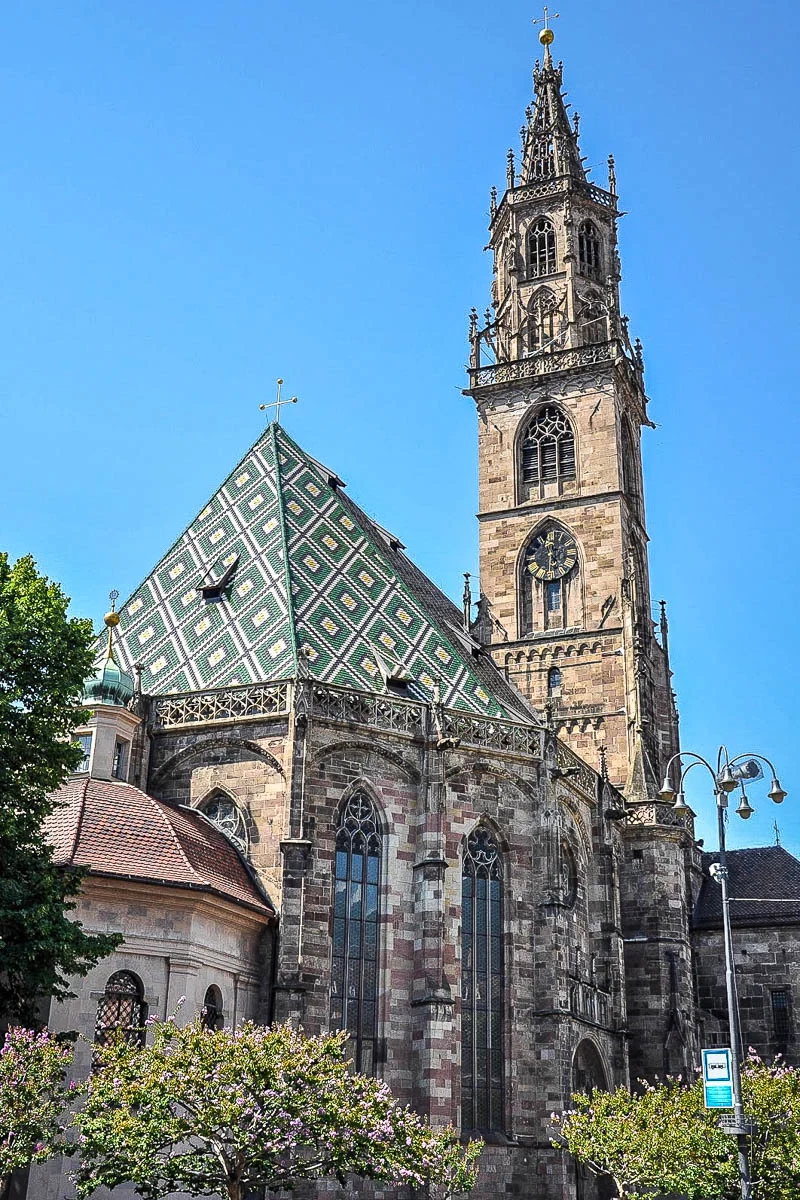
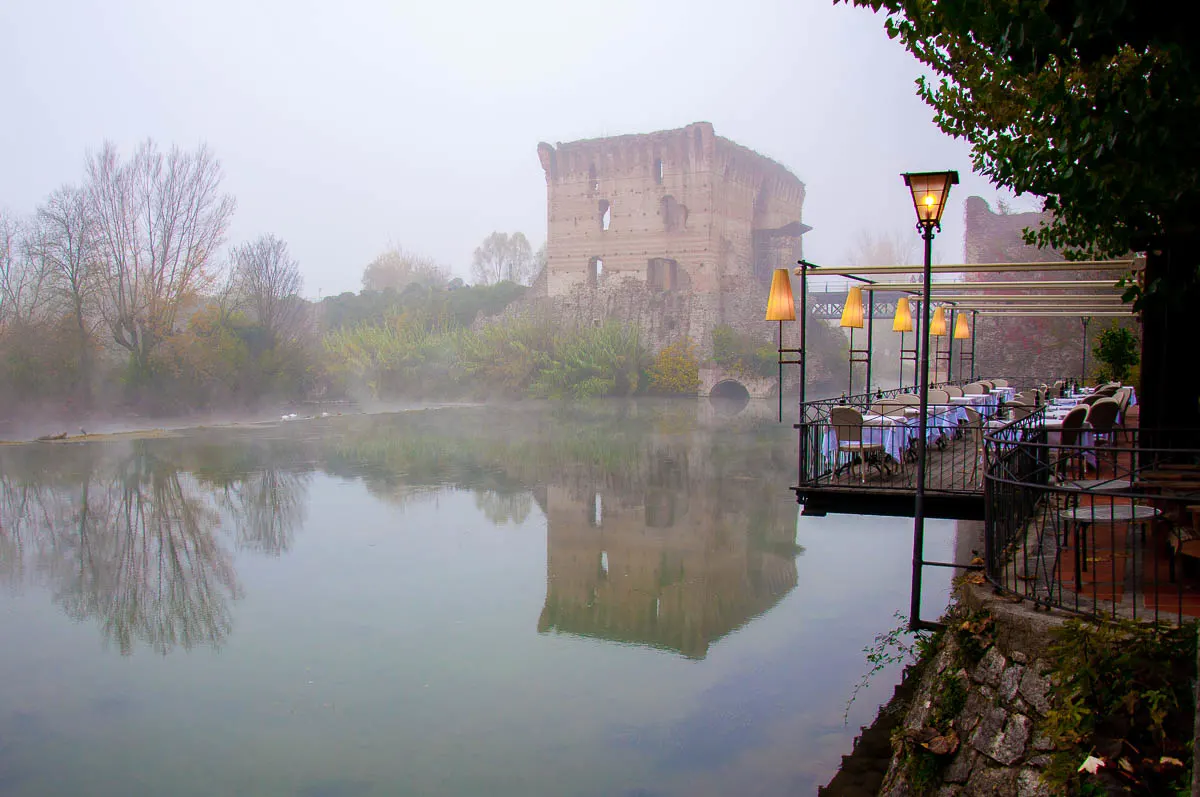
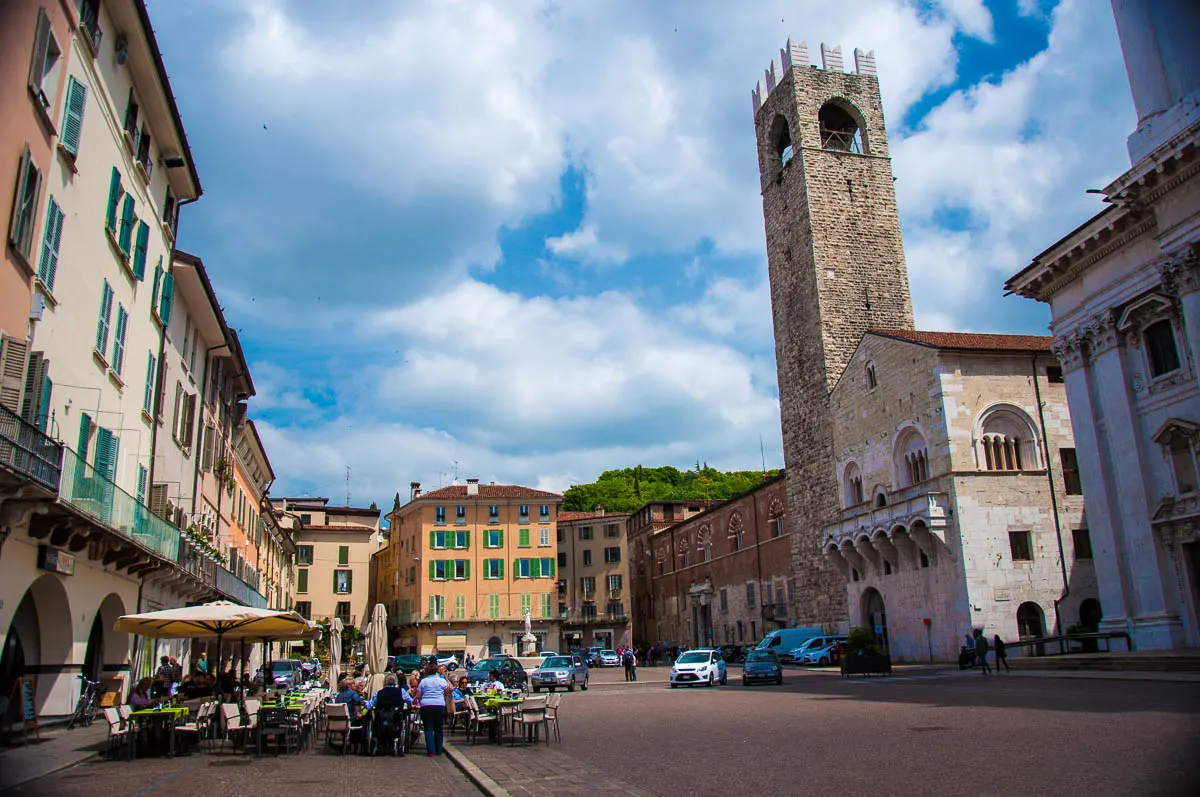
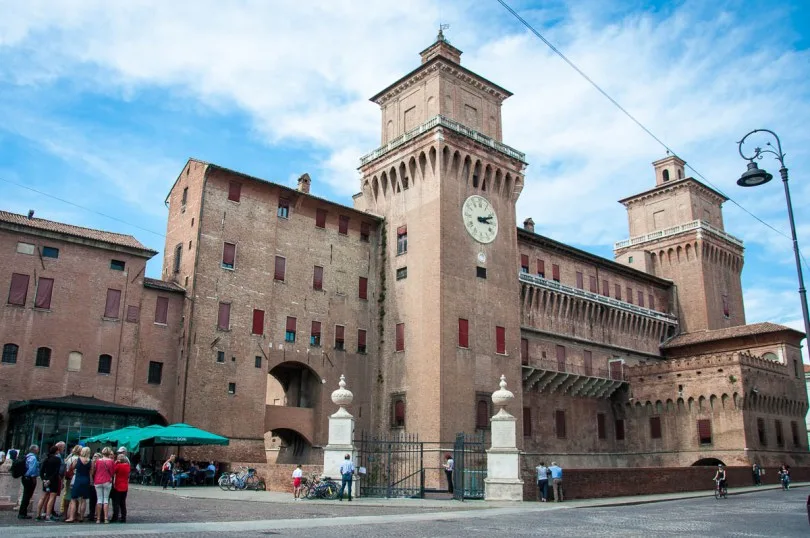
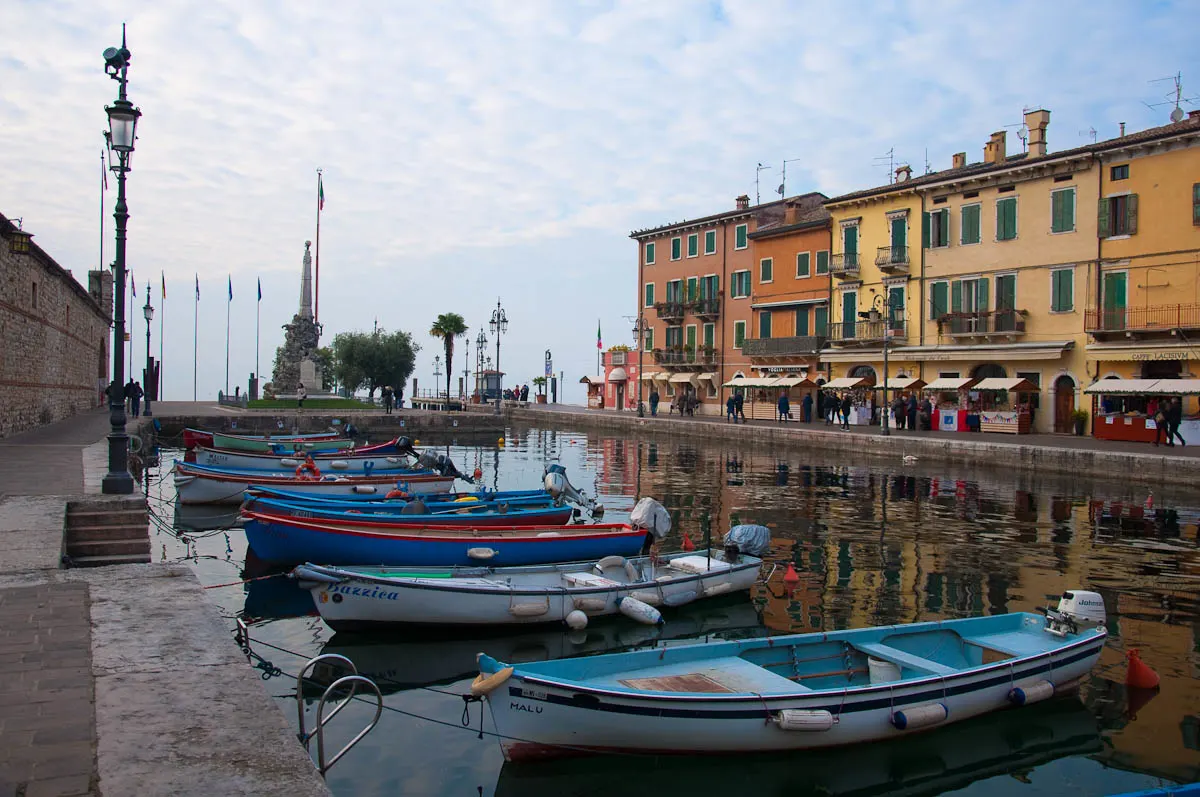

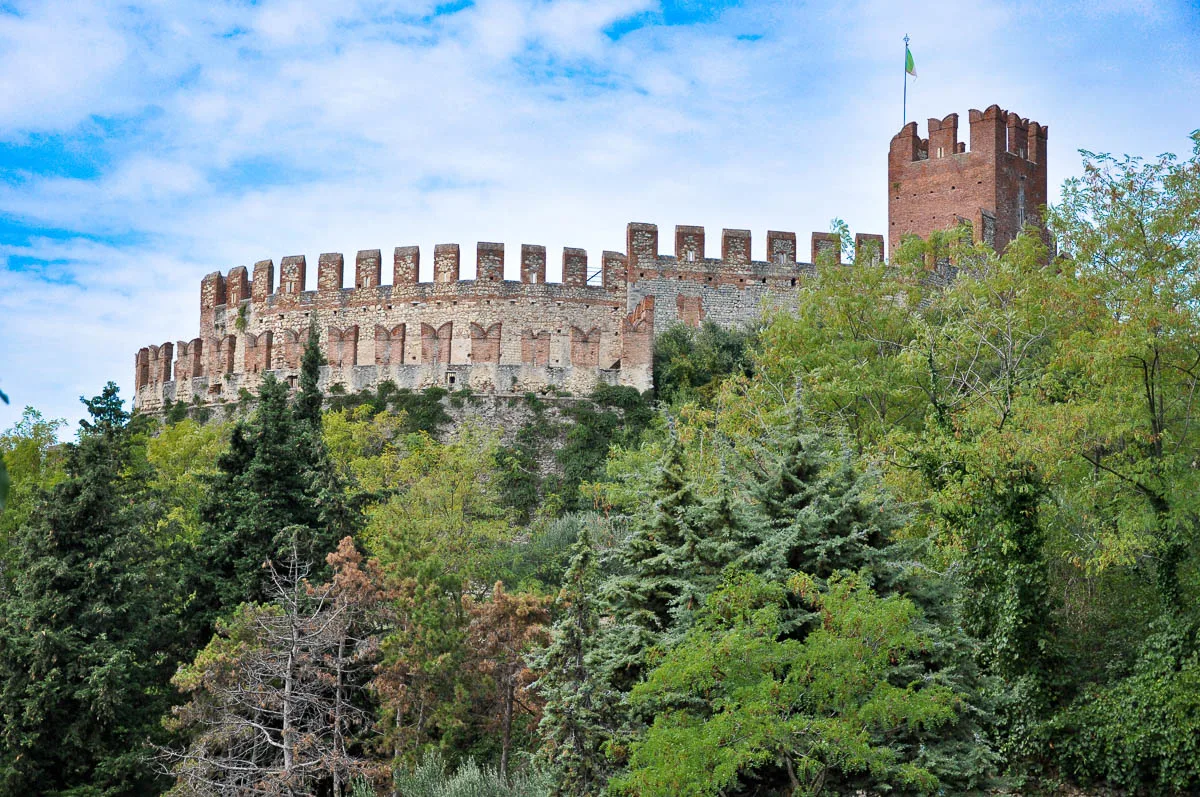
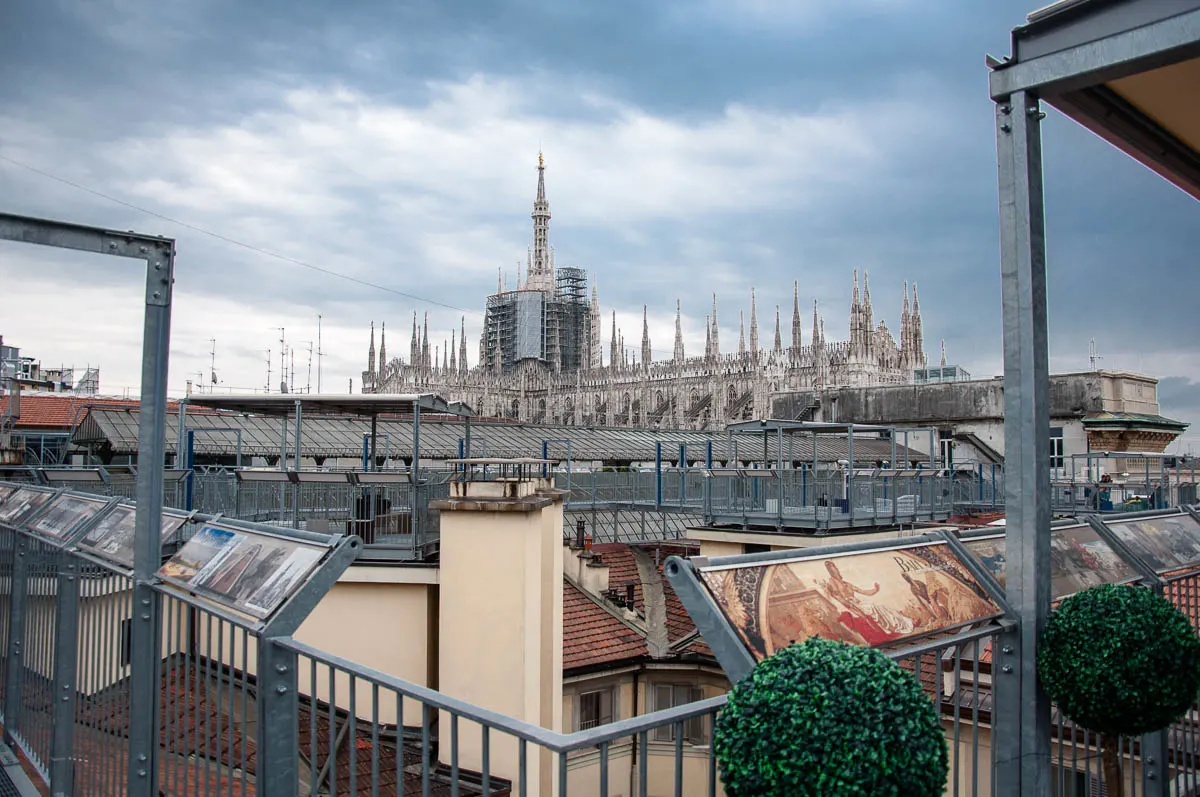
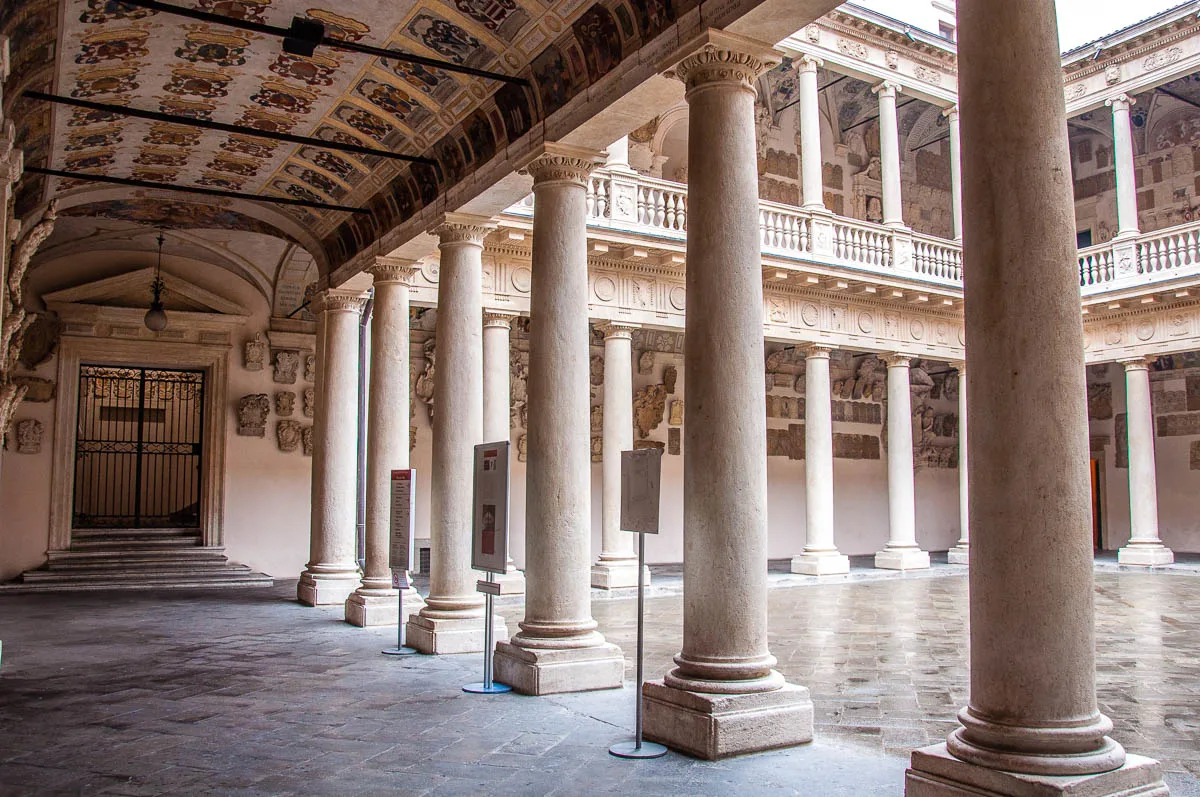

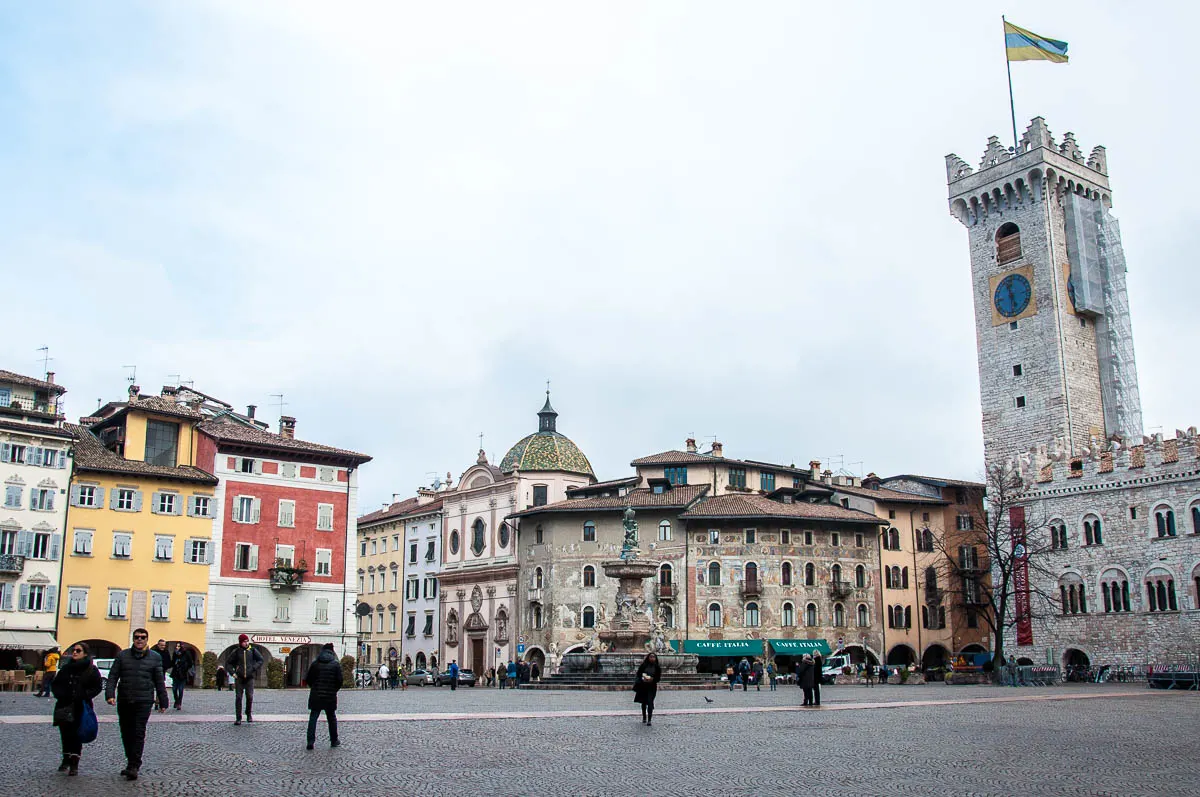
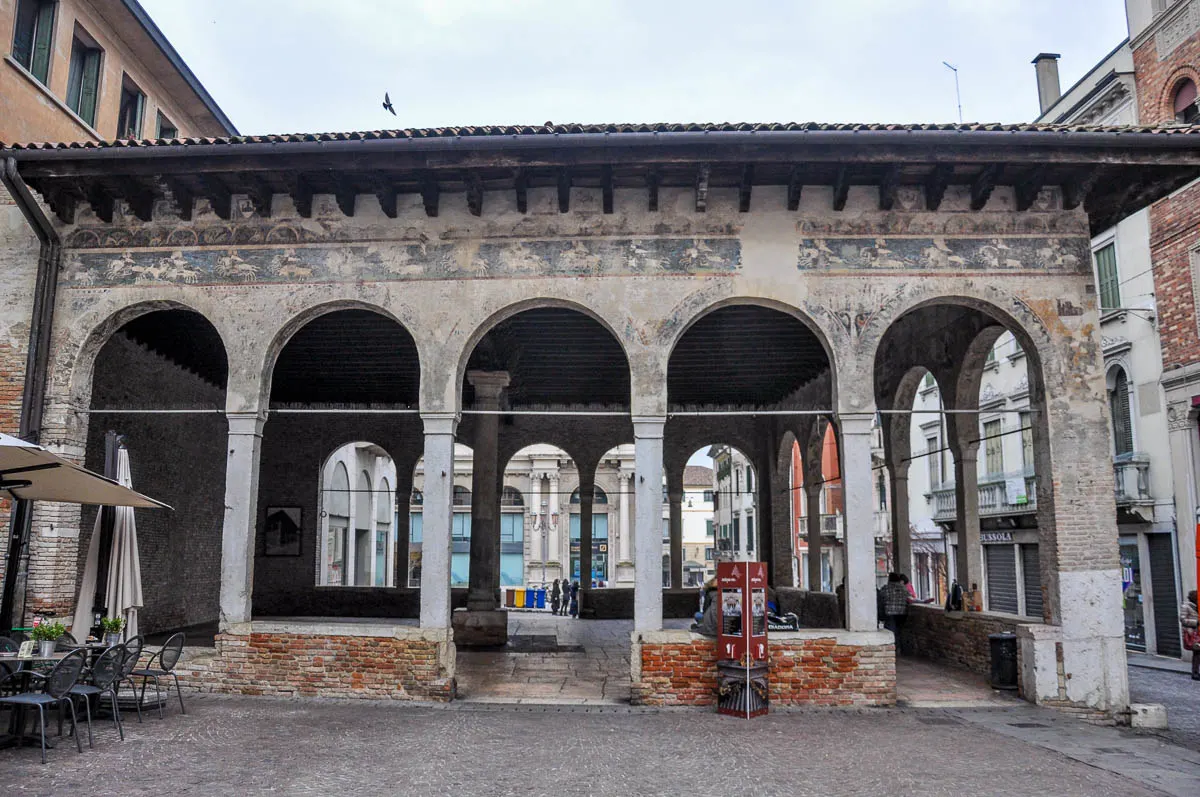
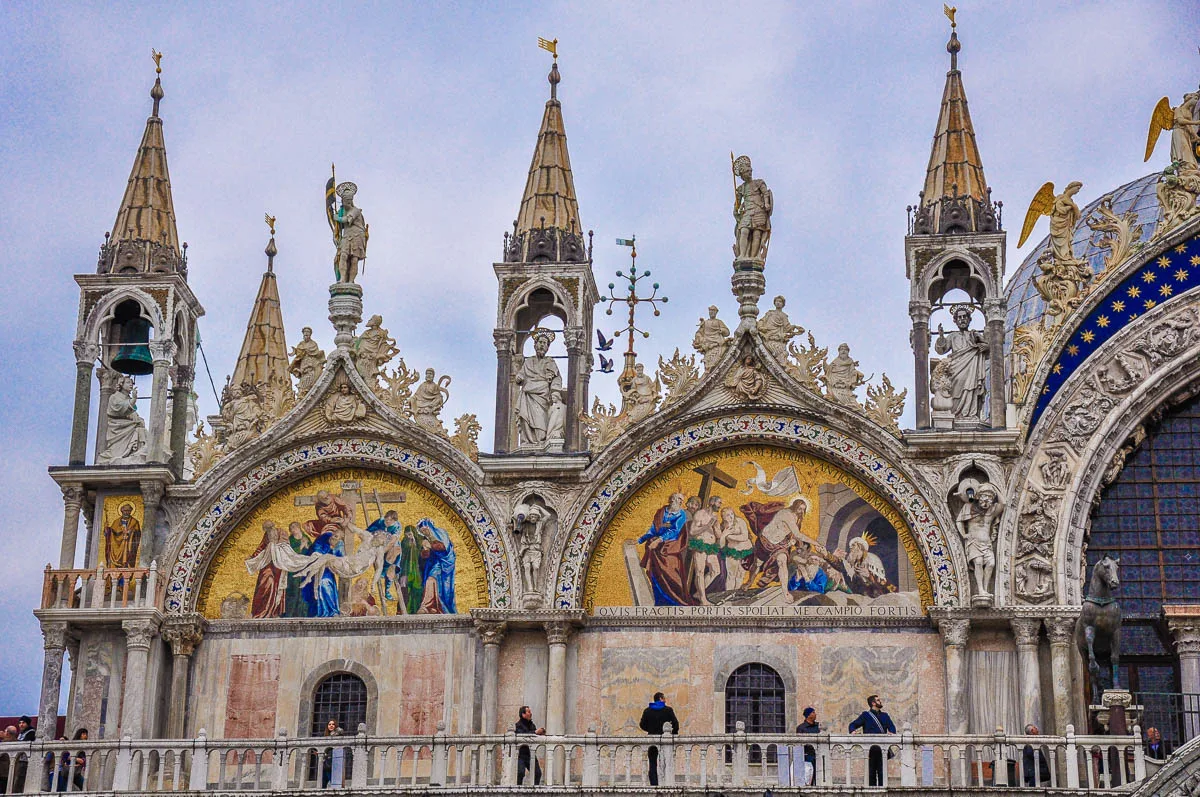
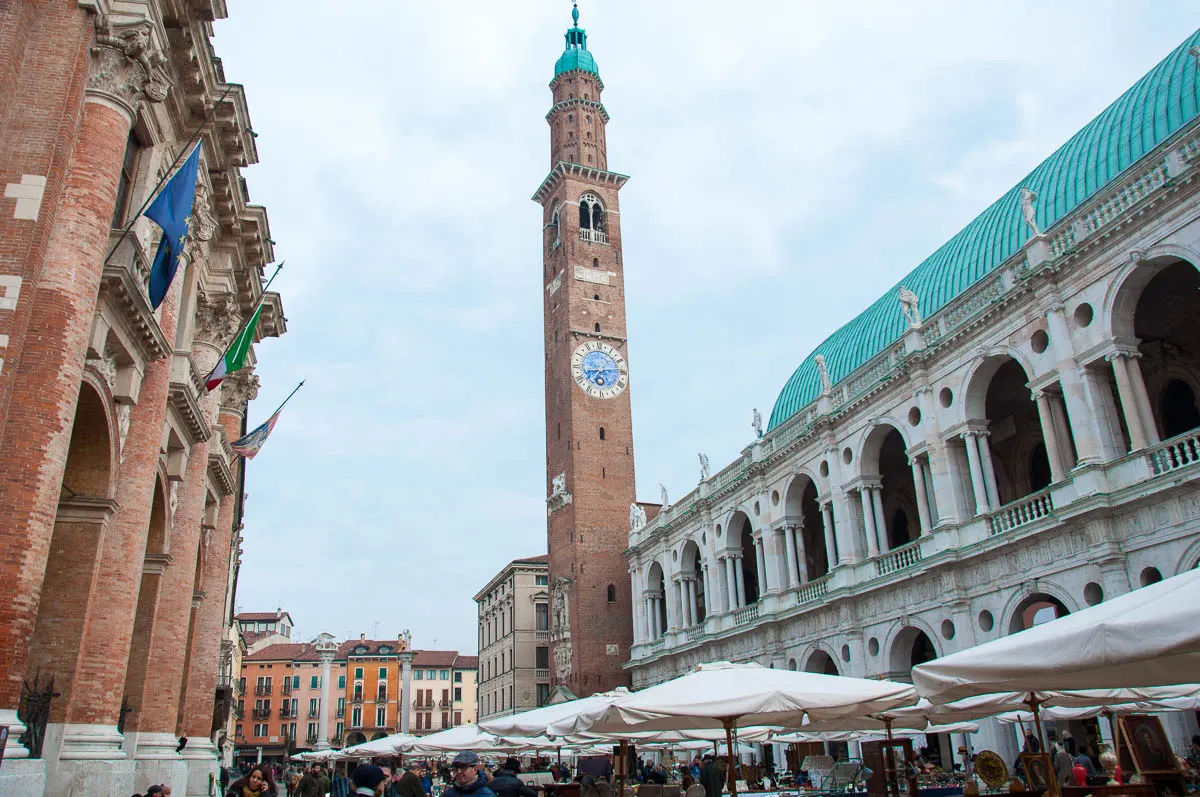
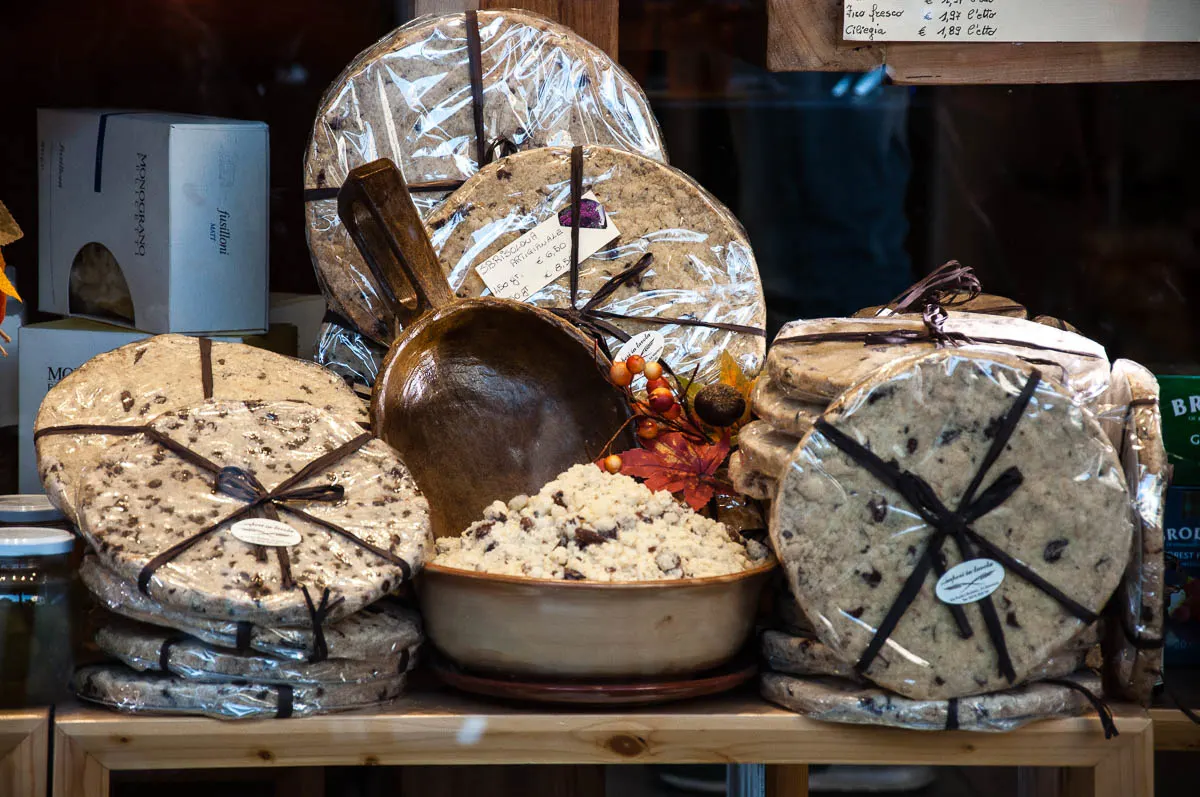


Jeanette
Thursday 10th of October 2019
Your blogs are fantastic and much better than reading travel books. I am planning a trip to northern Italy next September. With regard to train tickets, is it better to buy one-way ticket or buy a return ticket? Then would you need to validate the return ticket before you commence your return train ride back to Verona?
admin
Thursday 10th of October 2019
Many thanks for your kind words! I appreciate them. In reply to your query: - if you buy tickets for the fast regional train (Treno Regionale Veloce) or the regional train (Treno Regionale), it's best to buy a return ticket (provided you are returning to the point of departure). There is no discount, i.e. both tickets cost the same as bought individually but you won't have to queue twice. The tickets are also printed individually so you will need to validate each ticket before boarding the respective train. Don't validate them at the same time (i.e. at departure), do the departure one at the outward journey and the return one at the return journey. I hope this makes sense. - if you buy tickets for one of the speed trains like Frecciarossa, for example, it's again best to buy the return ticket at the same time and, if possible, in advance of the journey, as the prices for these trains get more expensive the closer to the day of travel you buy them. These tickets don't need to be validated as they come with an assigned seat and carriage. I hope the above answers your query.
Best wishes and Have a great time in Italy!
Rossi :)
Maria
Tuesday 27th of August 2019
Your list is wonderful, thank you so much! It helped me shape up my plans for the trip. One quick question on the Dolomites, do you know if there is any moderate hike from Bolzano with good views of the mountains that's accessible by public transport? I will be traveling with my parents, who can't do strenuous hikes but would still like to see the mountains on a day trip from Verona. Otherwise, I was thinking taking train to Brixen and then a bus to Plose. Would you recommend this option, or is there something closer/nicer? Best wishes, Maria
admin
Tuesday 27th of August 2019
Dear Maria,
Thank you for your kind words. I am pleased that the above blog post has been of help to you. In reply to your query: the train journey from Verona to Bolzano mainly follows a narrow valley through the mountains, so you will enjoy some stunning mountain views even when you travel. Once in Bolzano, you can get the free shuttle to Runkelstein Castle - this medieval castle was built on top of a steep hill surrounded by the mountains and visiting it allows you to enjoy lots of mountain views while learning about the local history. The shuttle leaves you at the bottom of the hill on which the castle is built so you have a walk of about 10 mins (if you walk slowly) up a wide cobbled path. All details about the shuttle and the castle are here: https://www.runkelstein.info/visitor-info. Another option to reach the mountains is to take the Bolzano cable car. For details, please, have a look: https://www.bolzano-bozen.it/en/cable-cars-bolzano.htm. Or you can contact directly Bolzano's Tourist Information Office and ask them to recommend an easy mountain walk. They have some at this page (their contact details are there, too): https://www.bolzano-bozen.it/en/walking-excursions-bolzano.htm Unfortunately, I haven't been to Brixen myself so I can't give you a first-hand tried and tested recommendation with regards to it. Have a great time in Italy!
Best wishes,
Rossi :)
John Beeson
Friday 2nd of August 2019
Hi Rossi. Thank you so much for the very useful information you've provided. My wife and I are also thinking of a day trip to the Dolomites from Verona. We'll be staying within walking distance of the Porta Nuova train station. What can you suggest please. Many many thanks. John
admin
Saturday 3rd of August 2019
Hi John,
Thank you for your kind words. In response to your query: the Dolomites cover a very large area. What are your plans for the day: sightseeing, hiking, cycling, museums, castles, lakes or something else? Once you have narrowed your plans for the day, then it would be easier to pinpoint a town or a place in the Dolomites you may be interested to visit. You can find many options and recommendations here: https://www.dolomites.org/. Otherwise, you can simply get the train from Verona Porta Nuova to Rovereto, Trento or Bolzano (three stops on the same train line), enjoy the stunning mountain views as you travel and then spend a great day exploring one of these three cities and the many museums, sights, and castles in and around each one of them. Have a great time in Italy!
Best wishes,
Rossi :)
Sallyann Ducker
Sunday 14th of October 2018
Cara Rossi - thank you so much for your article. It is wonderful. We live in Australia and have just returned from a trip to Italy and I was just thinking about another one in two years time. Verona has always sounded wonderful and I think you have clinched Verona in our plans for our next trip. We like to stay in one place for a while and then use it as a base. It sounds like we could spend at least a week in Verona! Molto grazie, Sallyann
admin
Monday 15th of October 2018
Dear Sallyann,
Thank you so much for your kind words. Verona is very pretty and there is lots to see and do in the city and in the vicinity. Happy planning your next Italian adventure! Best wishes,
Rossi
Matthew
Monday 8th of October 2018
We are heading to Verona from NYC today and we are so grateful to you for writing this very informative and useful guide for day trips from Verona. This article is exactly what we were looking for and what we will use to make our special first trip to Italy a wonderful enriching experience. Thank you so very much for sharing your experiences.
admin
Tuesday 9th of October 2018
Many thanks for your very kind words. I am glad to have been of help. Have a wonderful first trip to Italy! Best wishes,
Rossi